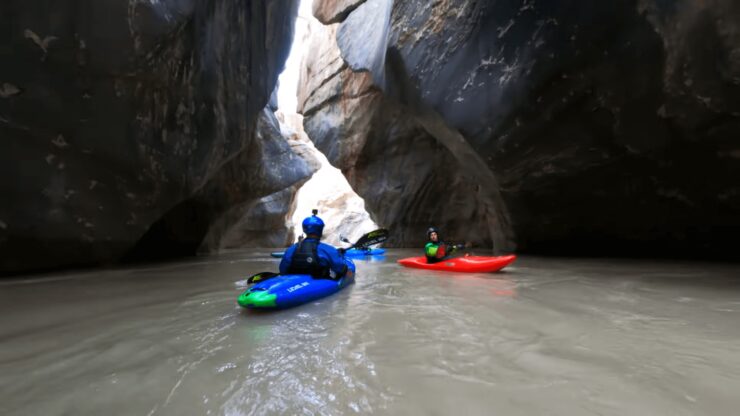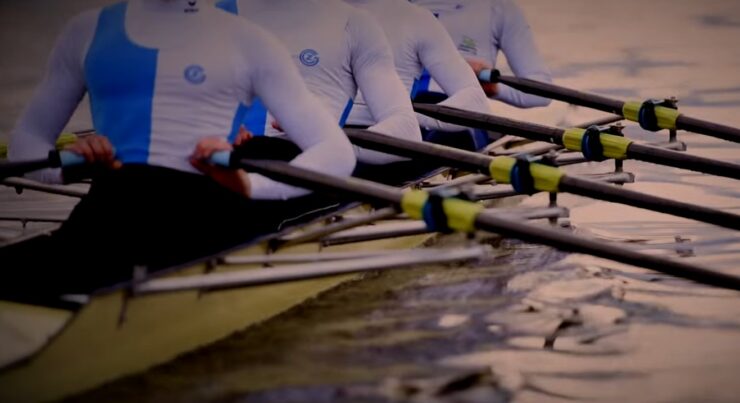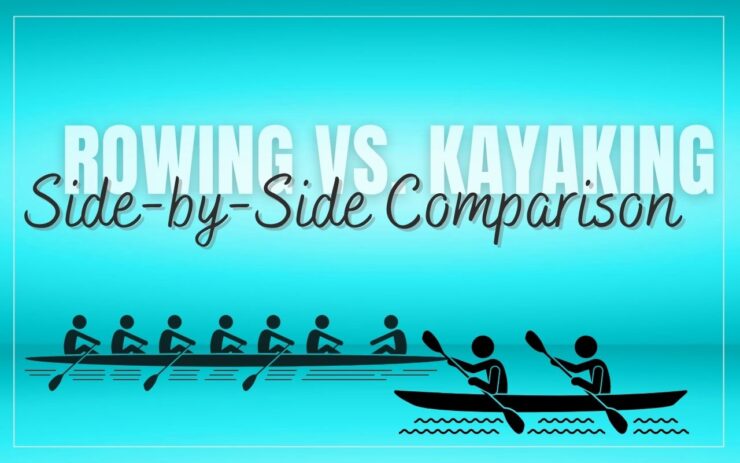Having some newfound free time in your life is a very liberating feeling, a situation to sit down and think how best to use it. There are many activities to choose from as a potential hobby and people usually have a few they would like to do.
Sadly, time constraints and busy schedules only allow for so much at once and one activity is all we can get. However, that does not mean that it should be approached lightly.
For example, those who enjoy spending time outdoors have a wide variety of physical activities to pick out, but also those that are more relaxing. Ultimately, it does come down to personal preference and what each of us likes doing the most.
Do you want to be more active in your new outdoor hobby or spend it in relaxation? One choice that adventure lovers tend to have deals with water-bound activity: which should I pick, rowing or kayaking?
If you enjoy the great outdoors and love nature but also want a hands-on activity to fill out your free time, either of the two is great. Making the choice of which one is a tough decision, but worry not.
Right here and now we are going to help you pick the right one for you. Read on to learn more about both rowing and kayaking, how they are similar and what makes them different, and by the end, we promise you will know what to pick.
Table of Contents
ToggleThe Similarities

Right off the bat, it is more than clear what makes these two outdoor activities similar. The fact that you are in a small boat, on the water, and making an effort to traverse the waters is true for both of them. They have also been around for thousands of years and are an integral part of human history.
Kayaking and rowing are great as sports but also for recreation and other uses.
Another similarity is that beginners need to think long and hard about what they expect from it and why they want to do it. They include purchasing a vessel, storing it, caring for it, and taking it out every time you feel like rowing or kayaking.
This is an investment but a great new way to explore nature too. Still, they are two separate disciplines of operating a personal boat, enough so to make them very distinct indeed.
The Differences
Differences between rowing and kayaking come in a few different ways and they need to be explored in detail. Kayaks are very different from rowing boats, rowing is quite different from paddling as a way to move a vessel, and there are different uses for both activities.
They are not mutually exclusive but they are also not an either-or choice. There are things you can do with one that is not really possible with the other. This is why it is about your plans on the water as much as it is about other differences.
Rowing is More Difficult

Rowing burns more calories, it is a more challenging exercise, and it requires more training and practicing to do right. If you want a true workout on the water, rowing is the better option for you.
More muscles are used when rowing than kayaking and the overall impact on the body is greater. Arms, shoulders, and the back are very busy when working the oars, but so are the legs. Rowers have to bend the knees back and forth and use the quadriceps and gluteus muscles.
Kayakers keep their legs bent and only use the thighs to shift the legs a bit. For a stronger workout and a real exercise session, rowing is much more efficient. Arms, shoulders, and the back are also used but there is much less effort needed to move through the water.
You can chill and paddle around without much effort if you know how to use the paddle of course. There is no need to work the paddle hard, just right. With rowing, there is no use in doing it lightly because it beats the purpose.
Environment and Water Conditions

One thing that is not so great about rowing is the fact that it can only be done in calm waters like slower rivers and calm seas. As soon as the conditions start turning and the weather becomes windy or rainy, and the waters are no longer at ease, rowing conditions are no longer there. Things are quite the opposite with kayaking.
While rowing is a planned activity where you go in order to row, kayaking is also a means of transport and relaxation and the paddling itself is not the main idea behind it. However, it can also be done in many water types including whitewater, rapids, as well as calm freshwater, and the sea.
Kayaks are also used for many other activities where they are only a tool to make it easier, like fishing, hunting, photography, and exploration.
Utility and Versatility
Last but not least, we have to mention the uses of rowboats and kayaks. Boats meant for rowing are very sleek, and sporty, and often seat multiple rowers. They are for serious rowers who are either amateurs who like the sport or professionals who continuously practice.
You can also row in any type of boat really provided that you can attach the oars in the right position. Rowboats do not have to be just dinghies with sharp bows and flat sterns. They can also be canoes, pointy at the bow and stern. Rowing is usually done by going straight, either backward or forwards.
Kayaks, on the other hand, are specifically made for different purposes. There are touring kayaks for example that are meant for easy paddling around. They can fit a lot of gear, usually a single kayaker, and exist in different types (e.g. sit-inside, sit-on-top).
There are also fishing kayaks with a ton of folders, rails, cables, and mounts as fishermen need their gear at the ready. Kayaks are long and narrow, either favoring speed or maneuverability. Turning is much easier with a paddle than with a set of oars, and one can do more things kayaking than rowing.
Meet Maria Alexander, the fearless adventurer steering the ship at KayakPaddling.net. Her mission? To convince you that life’s too short for dry land and that the best stories always start with “So there I was in my kayak…”
Related Posts:
- Heavy Duty Fishing: 11 Best Rods And Reels For Big Fish 2024
- 16 Best Kayak For Beginners 2024 - Kayaking Adventure Gear
- 10 Best Inflatable Kayak 2024 - Rivers, Lakes & Open Seas
- 10 Best Saltwater Fishing Boats - Ultimate Angling Adventure
- 12 Best Kayak GPS 2024 - Find Your Way to Adventure
- 12 Best Fishing Lures Ever 2024 - Baits That…












